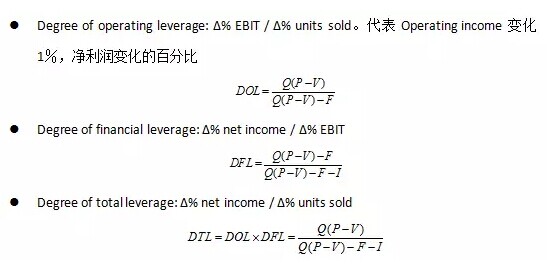本帖最后由 CFA-online 于 2016-2-3 10:40 编辑
5.1 Capital Budgeting · Decision are based on Cash flows, not accounting income. · Incremental cash flows: Cash flows will change if the project is undertaken. · Ignore: 1)Sunk costs (any costs that cannot be avoided, even if the project is not undertaken, consulting fee, advertisement costs). 2)Financing costs / interest cost (financing costs are included in the project cost of capital or WACC). · Include: 1)A positive externalities (the product benefits sales of a firm’s other product lines)
2)A negative externalities ->Cannibalization (New project takes sales from an existing product)
5.2 NPV IRR的计算 · For independent projects: 1)If NPV>0, increase wealth, Accept! 2)If NPV<0, decrease wealth, Reject! · For mutually exclusive projects: 1)Choose the one with highest NPV

· Minimum Acceptance Criteria: 1)Invest if IRR ≥ the required rate of return 2)Reject if IRR < the required rate of return · Ranking Criteria: Choose the highest IRR · Disadvantage 1)Assume the reinvestment rate is IRR 2)No IRR & multiple IRR 3)Conflicting ranking results of mutually exclusive projects with NPV (注意如果题目中仅给出IRR,不能直接判断,必须再计算NPV)。
5.3 WACC的计算
5.4 根据pure play method计算levered beta · 在行业内找一家与此非上市公司(X)在经营风险上相似的上市公司(Y),此公司equity β已知 · 用公式计算出上市公司(Y)的assetβ, 这是去公司杠杆化的过程。

· 注意以上两个公式的形式是相同的,,只是注意在不同公司的时候,用不同公司的D/E ratio;如去杠杆化上市公司(Y)就用Y公司的D/E ratio。 · 最后通过CAPM模型来估算非上市公司的cost of equity.
5.5 DTL, DFL, DOL的计算

|